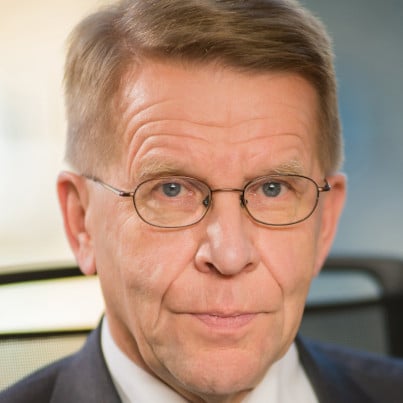How Jukka Laaksonen initiated the EU stress tests

Jukka Laaksonen was Chairman of the Western European Nuclear Regulators Association (WENRA) and Director General of the finnish nuclear safety authority Säteilyturvakeskuksen (STUK) when the events in Fukushima took place. He has held nuclear safety expert positions within the International Atomic Energy Agency (IAEA), the Organization for Economic Co-operation and Development (OECD) and the European Union (EU).
Mr Laaksonen, as WENRA Chairman, what were the first thoughts that you had when you were informed about the events in Japan?
I understood already from the first public news and from the reports and videos about the destruction caused by the tsunami that core meltdown at all operating units was inevitable. I was interviewed in the Finnish TV news about ten hours after the first reports had been received and I told that I was expecting all three operating reactors to melt soon, although all of them were still intact at that time. We had direct contacts with our friends working in the Japanese regulatory organization and in the technical expert organization JNES. In discussions with them we got a clear picture of the accident sequences at different units. In Finland we had to explain quickly to the politicians what type of external hazards had been considered in the design of our nuclear power plants and what kind of protection against those hazards was provided. This required that we started to investigate together with the operating organizations the credibility of the protective measures at the operating Finnish nuclear power plants. After that I wanted to tell WENRA colleagues about our investigations and to hear about corresponding actions in other countries.
When did the head regulators of European nuclear authorities first meet after the events in Fukushima?
The European nuclear regulatory bodies had at the time of Fukushima accident a very well functioning personal level co-operation among the head nuclear regulators. All of the head regulators were personal members in WENRA. The meeting dates had been fixed already some months before the Fukushima accident and all WENRA members had arranged their travels to Helsinki. Therefore, WENRA had its regular meeting in Helsinki on 22-23 of March 2011, ten days after the Fukushima accident. The meeting was just on time to discuss about European level regulatory actions in response to the accident. For the Fukushima agenda item, I prepared an example of stress tests planned for the Finnish NPP. In the Helsinki meeting, I also made a presentation on potential contents of the stress tests.
How did the European nuclear regulatory bodies react on your proposal?
A decision to plan European level stress tests was made in full consensus in the meeting. In the meeting we decided that the Reactor Harmonization Working Group (RHWG) of WENRA starts preparing the plan for stress tests. This is what was done under leadership of the new RHWG chair Lasse Reiman from STUK, who was appointed to this post in the Helsinki meeting. The work progressed quickly, and two drafts for stress test specifications were issued in few weeks.
Why was it, in your opinion, so important that a review like the EU-Stresstest was set up very quickly after Fukushima?
Mutual peer reviews of regulatory activities had been WENRA’s core work. Expanding co-operation to Fukushima related investigations was a natural continuation on the same general operating line. On the other hand, there was European wide political pressure to investigate safety of all European nuclear facilities. Stress tests had been conducted earlier in the banking business, and the term stress tests was proposed to nuclear regulators from the political level. Formally the European Commission gave a task on organizing stress tests to ENSREG, which is like an «official version of WENRA» working under the umbrella of European Commission. WENRA members are also members of ENSREG, and additionally WENRA has tasks forces consisting of high caliber regulatory experts. It was important for trust on European nuclear regulators that the regulatory community responded positively to the request of the European Commission and took responsibility for arranging stress tests.
What were the next steps?
The RHWG was in charge of the planning process all year of 2011, and I also worked together with the working group, especially planning the organization and the process for conduct of the work. Evidently I was expected to be in lead of the entire process but due to my expected retirement from STUK I suggested Philippe Jamet from France to take the lead. He was thus appointed as the main person in charge of the process.
This interview belongs to part three of ENSI’s series to mark ten years on from the Fukushima-Daiichi disaster on 11 March 2011.

